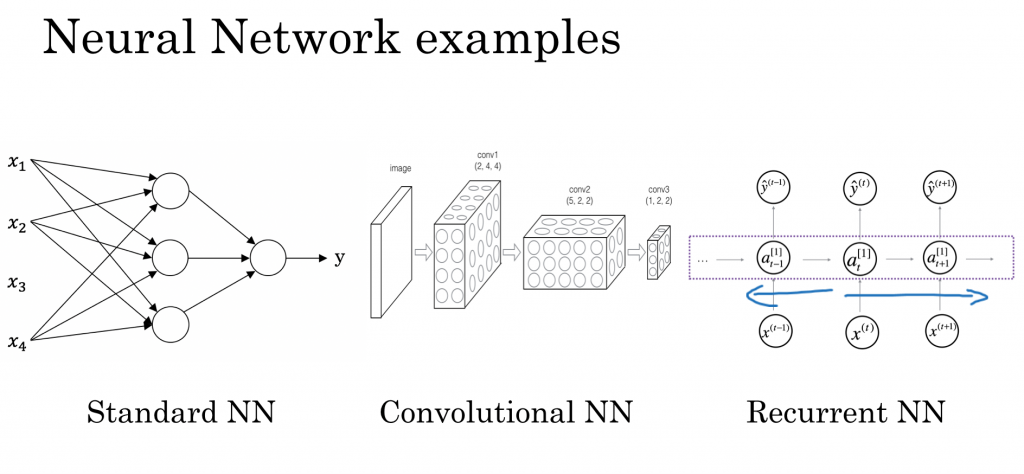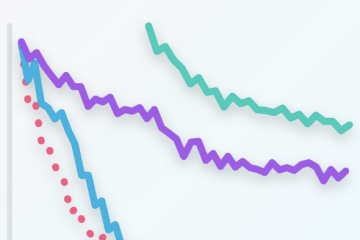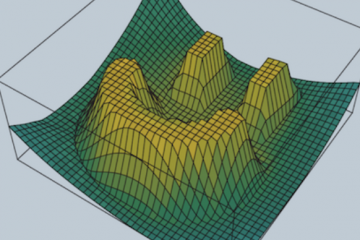Introduction to Deep Learning
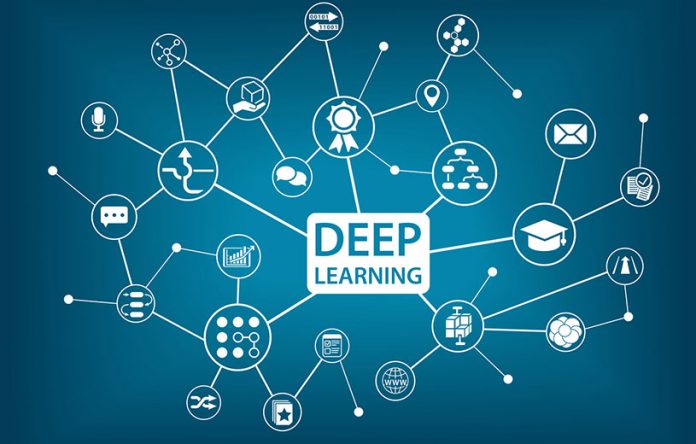
What is a neural network?
The term, Deep Learning, refers to training Neural Networks, sometimes very large Neural Networks. So what exactly is a Neural Network? In this video, let’s try to give you some of the basic intuitions. Let’s start to the Housing Price Prediction example. Let’s say you have a data sets with six houses, so you know the size of the houses in square feet or square meters and you know the price of the house and you want to fit a function to predict the price of the houses, the function of the size. So if you are familiar with linear regression you might say, well let’s put a straight line to these data so and we get a straight line like that
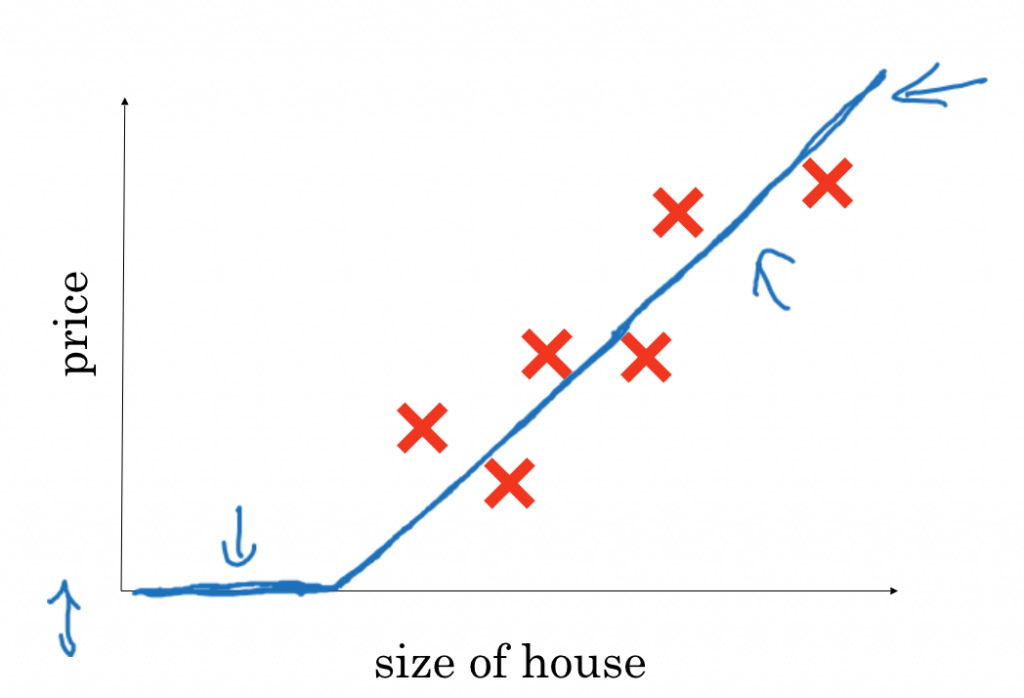
So you can think of this function that you’ve just fit the housing prices as a very simple neural network. We have as the input to the neural network the size of a house which one we call x. It goes into this node, this little circle and then it outputs the price which we call y. So this little circle, which is a single neuron in a neural network, implements this function that we drew on the left.
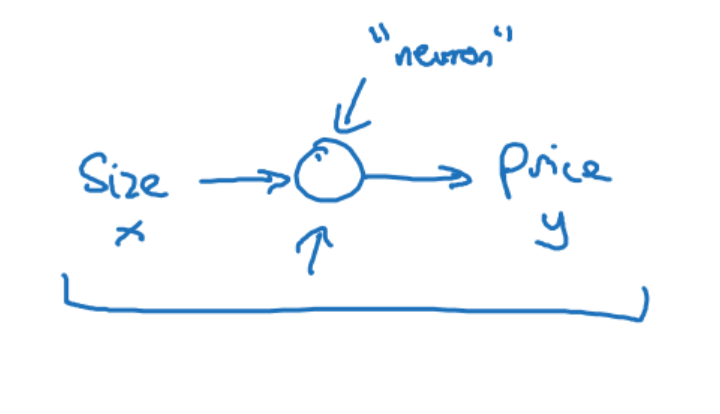
And all the neuron does is it inputs the size, computes this linear function, takes a max of zero, and then outputs the estimated price.Let’s say that instead of predicting the price of a house just from the size, you now have other features. You know other things about the host, such as the number of bedrooms, I should have wrote bedrooms, and you might think that one of the things that really affects the price of a house is family size, right? So can this house fit your family of three, or family of four, or family of five? And it’s really based on the size in square feet or square meters, and the number of bedrooms that determines whether or not a house can fit your family’s family size. And then maybe you know the zip codes, in different countries it’s called a postal code of a house. So that based on the size and number of bedrooms, you can estimate the family size, their zip code, based on walkability, based on zip code and wealth can estimate the school quality. And then finally you might think that the way people decide how much they will to pay for a house, is they look at the things that really matter to them. In this case family size, walkability, and school quality and that helps you predict the price.
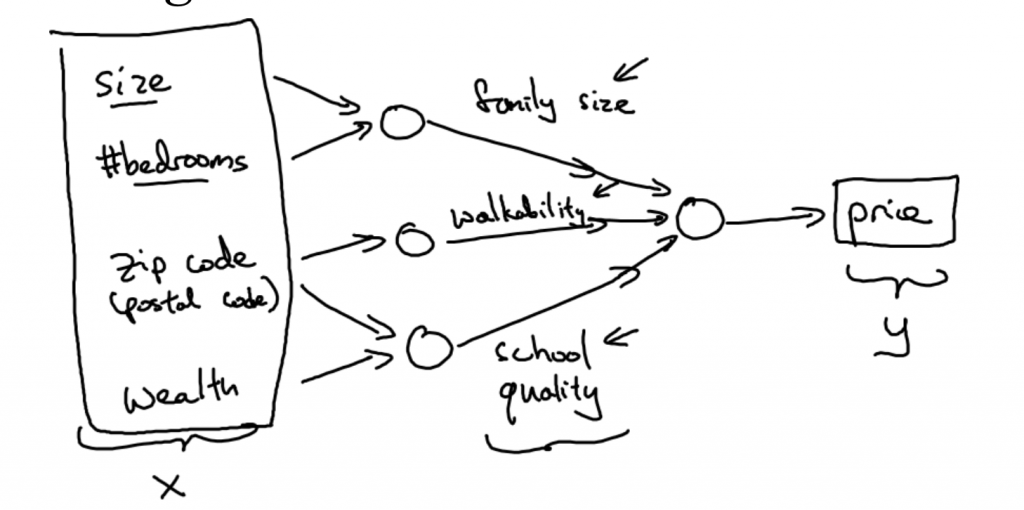
And so by stacking together a few of the single neurons or the simple predictors we have from the previous slide, we now have a slightly larger neural network. How you manage neural network is that when you implement it, you need to give it just the input x and the output y for a number of examples in your training set and all this things in the middle, they will figure out by itself.
So, that’s a basic neural network. In turns out that as you build out your own neural networks, you probably find them to be most useful, most powerful in supervised learning incentives, meaning that you’re trying to take an input x and map it to some output y, like we just saw in the housing price prediction example
Supervised Learning with Neural Networks
There’s been a lot of hype about neural networks. And perhaps some of that hype is justified, given how well they’re working. But it turns out that so far, almost all the economic value created by neural networks has been through one type of machine learning, called supervised learning. Let’s see what that means, and let’s go over some examples. In supervised learning, you have some input x, and you want to learn a function mapping to some output y. So for example, just now we saw the housing price prediction application where you input some features of a home and try to output or estimate the price y
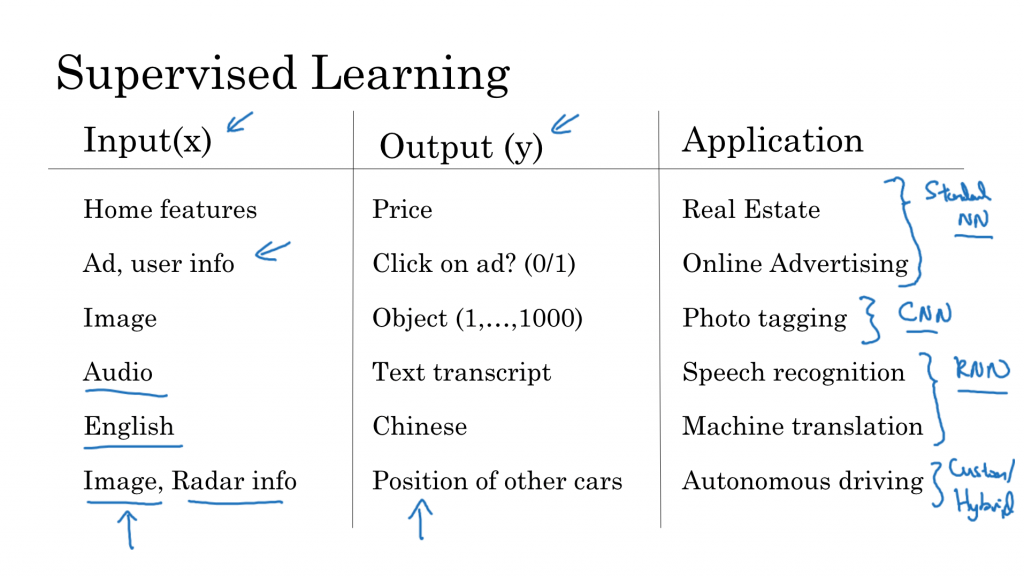
Computer vision has also made huge strides in the last several years, mostly due to deep learning.So you might input an image and want to output an index, say from 1 to 1,000 trying to tell you if this picture, it might be any one of, say a 1000 different images. So, you might us that for photo tagging. I think the recent progress in speech recognition has also been very exciting, where you can now input an audio clip to a neural network, and have it output a text transcript. For image applications we often use convolution on neural networks, often abbreviated CNN. And for sequence data. So for example, audio has a temporal component, right? Audio is played out over time, so audio is most naturally represented as a one-dimensional time series or as a one-dimensional temporal sequence. And so for sequence data, you often use an RNN, a recurrent neural network. Language, English and Chinese, the alphabets or the words come one at a time. So language is also most naturally represented as sequence data. And so more complex versions of RNNs are often used for these applications. And then, for more complex applications, like autonomous driving, where you have an image, that might suggest more of a CNN convolution neural network structure and radar info which is something quite different.
